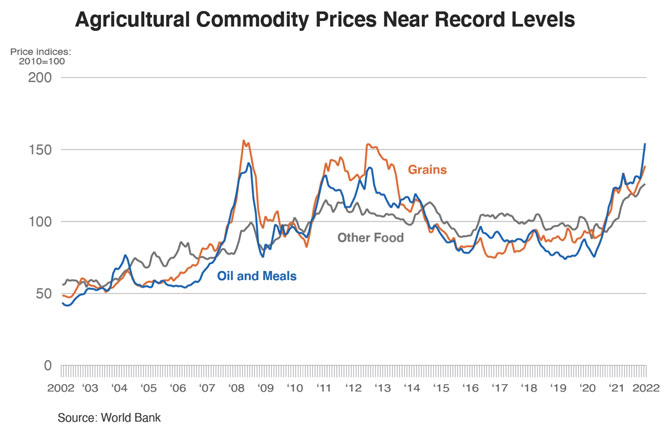|
Click to listen to this article
|
USDA’s Foreign Agricultural Service (FAS) published a report that analyzed the war in Ukraine and other factors that have contributed to high commodity prices and food insecurity. The study found that a number of factors have converged over the last 18 months to send global agricultural commodity prices to near-record levels, including increased global demand, led by China; drought-reduced supplies; tightening wheat, corn, and soybean stocks in major exporting countries; high energy prices pushing up the costs of fertilizer, transportation, and agricultural production; and countries imposing export bans and restrictions, further tightening supplies.
In response to the increased price of inputs, Rep. Tom Emmer (R-Minn.) and 96 of his colleagues sent a letter to President Biden urging action on rising fertilizer prices. In the letter they note that, since January 2021, the prices of key fertilizer sources have substantially increased: anhydrous ammonia by 203%, urea by 141%, liquid nitrogen by 162%, monoammonium phosphate by 74%, potash by 125%, and farm diesel by 95%.
The members urge President Biden to review all available options to lower the cost of fertilizer, including, but not limited to:
- Eliminating the cross-border vaccine mandate for transporters of essential commerce.
- Using existing USDA authorities under the food supply chain and pandemic response resources to provide support for farmers facing financial difficulties.
- Listing agricultural minerals like phosphate and potash as part of the Department of the Interior’s crucial mission.
- Increasing U.S. gas production.
- Approving pending export permits at the Department of Energy for liquified natural gas.
SOURCE: NATIONAL POTATO COUNCIL

